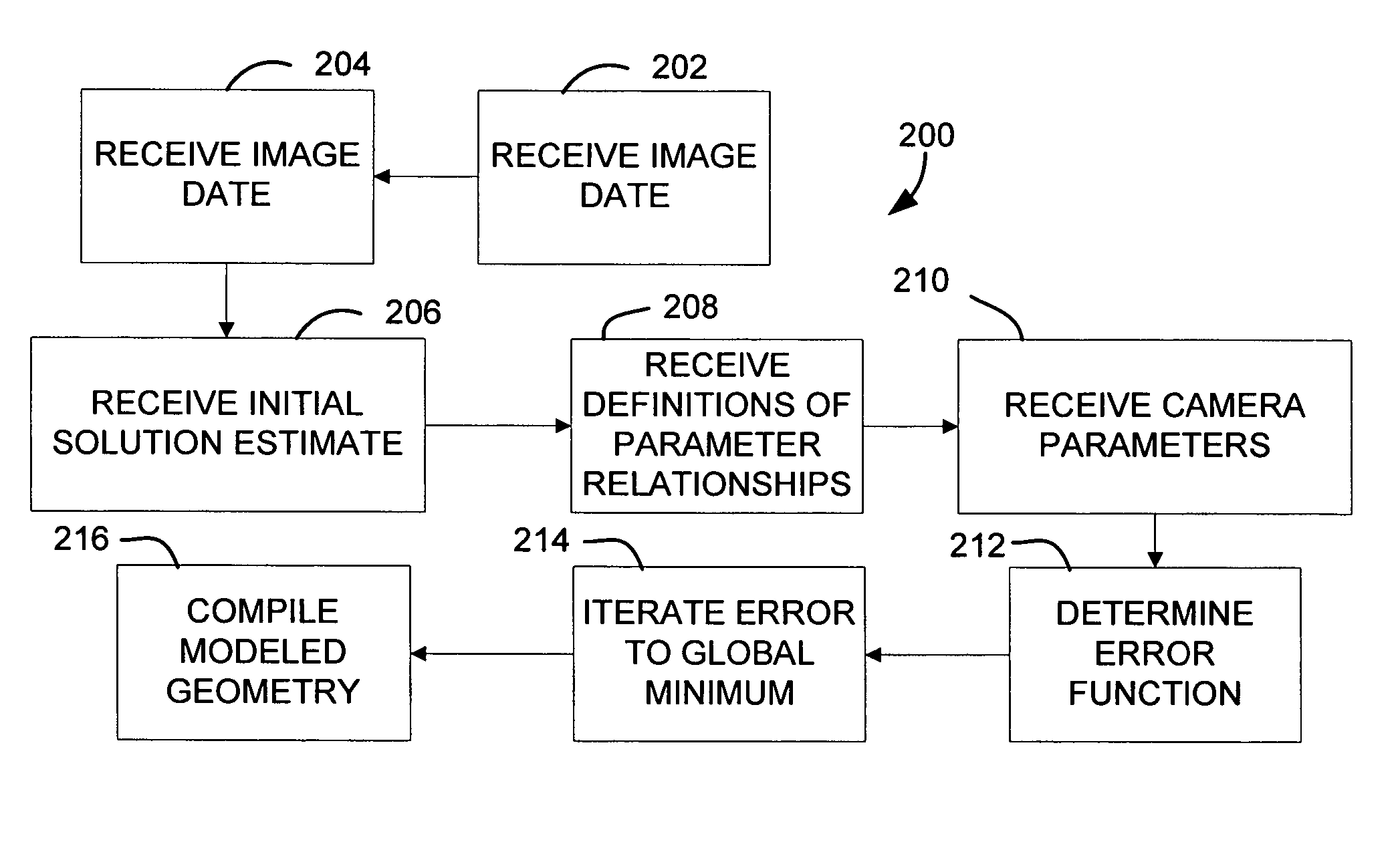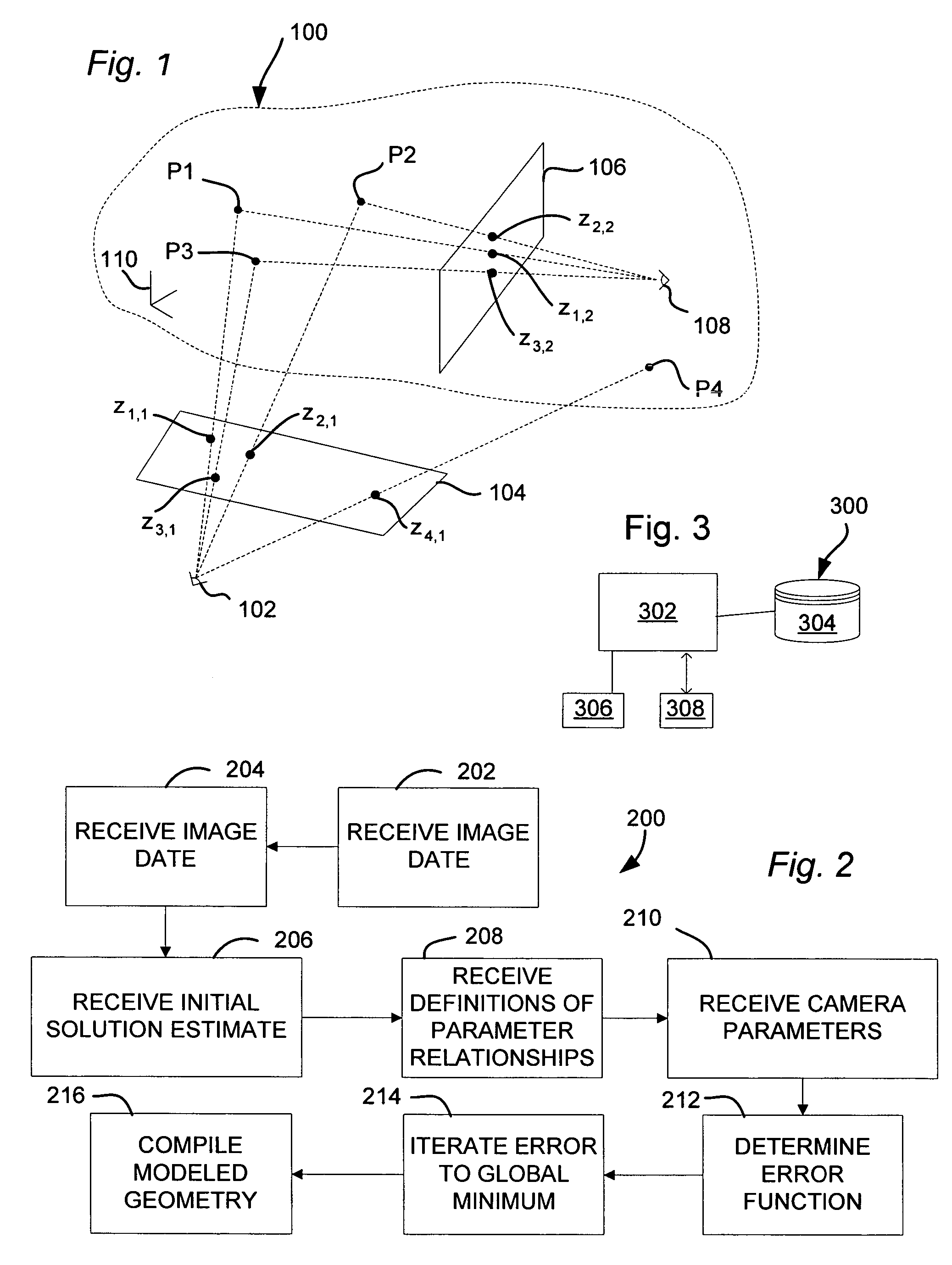Reverse-rendering method for digital modeling
a reverse rendering and digital modeling technology, applied in the field of reverse rendering and reverse rendering, can solve the problem that information needs not be highly accurate, and achieve the effect of more accurate reconstruction and constant height of houses
- Summary
- Abstract
- Description
- Claims
- Application Information
AI Technical Summary
Benefits of technology
Problems solved by technology
Method used
Image
Examples
Embodiment Construction
[0031]The present invention may be considered to have several different aspects that overcome the limitations of the prior art. For example, one aspect may comprise a method for solving bundle adjustment problems, and similar problems that use differential calculus, using generically-coded software for automatic differentiation. Another aspect may comprise an improved photogrammetry method that is designed to exploit the benefits of automatic differentiation. In the detailed description that follows, the analytical basis for the application of automatic differentiation to differential calculus problems in digital imaging is first described. Then, application of automatic differentiation using a generic programming approach is described in a second section. A third section provides a description of an exemplary photogrammetry process that may make use of automatic differentiation and generic programming as disclosed herein.
[0032]The invention provide a met...
PUM
 Login to View More
Login to View More Abstract
Description
Claims
Application Information
 Login to View More
Login to View More - R&D
- Intellectual Property
- Life Sciences
- Materials
- Tech Scout
- Unparalleled Data Quality
- Higher Quality Content
- 60% Fewer Hallucinations
Browse by: Latest US Patents, China's latest patents, Technical Efficacy Thesaurus, Application Domain, Technology Topic, Popular Technical Reports.
© 2025 PatSnap. All rights reserved.Legal|Privacy policy|Modern Slavery Act Transparency Statement|Sitemap|About US| Contact US: help@patsnap.com



